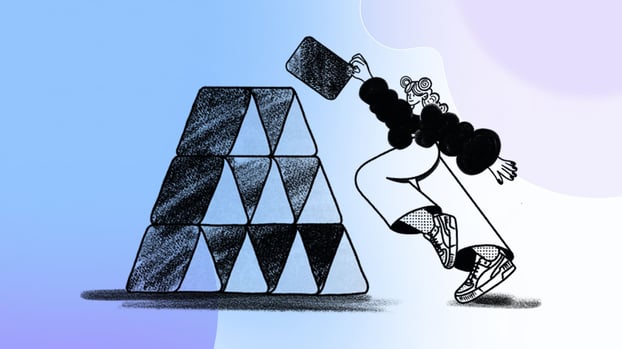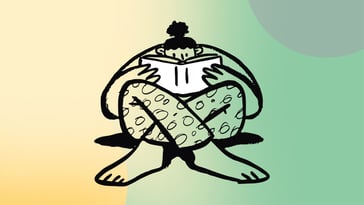Retail digital transformation is reshaping the industry, but many companies are still catching up. Tech-driven businesses have long embraced automation, data-driven decision-making, and agile development, and retailers are beginning to apply these lessons. This shift requires a fundamental change in how teams, operations, and technology come together to deliver exceptional customer experiences.
Without a strong digital foundation, retailers struggle to keep up with changing consumer expectations for flexibility, personalization, and speed.
Optimizing internal processes, modernizing IT functions, and adopting smarter technology will determine which businesses thrive. Of course, the main goal most stakeholders aim for is efficiency. Still, digital transformation is also about creating an adaptable, resilient organization that can respond quickly to market shifts and customer needs.

What is retail digital transformation?
In a traditional sense, retail digital transformation refers to the integration of digital technologies into all aspects of a retail business, fundamentally changing how it operates and delivers value to customers. While online sales channels are a well-known aspect of transformation, digital transformation also includes modernizing supply chains, automating inventory management, and enhancing workforce productivity.
Too often, businesses prioritize CX enhancements without addressing the internal processes that support them. A true digital transformation in retail requires redefining business processes to create an agile, responsive organization capable of thriving in a digital-first world.
More so, this is not limited to major global retailers with extensive resources. Smaller organizations can also benefit from similar principles and build in-house teams to improve performance and time to market, even if they do so on a smaller scale.
Why is digital transformation important for retail growth?
Retailers are under constant pressure to meet evolving consumer expectations for convenience, personalization, and seamless shopping experiences. However, many still operate with outdated technology, limiting their ability to respond quickly to market demands.
Digital transformation isn't just about improving customer-facing applications — it's about rethinking how the entire business operates.
A modernized tech infrastructure allows retailers to streamline operations, optimize supply chains, and make data-driven decisions. Automation reduces inefficiencies, while AI and analytics provide insights that improve everything from pricing strategies to customer engagement. Additionally, a well-integrated digital approach enhances omnichannel consistency, ensuring that online experiences work together.
Retailers that fail to modernize risk losing market share to competitors that can adapt faster.

6 benefits of retail digital transformation
A strategic approach to digital transformation creates opportunities for growth and efficiency across multiple areas of a retail business.
- Increased operational efficiency: Automating routine tasks reduces human error, minimizes waste, and improves overall productivity. Inventory management, order fulfillment, and customer support all benefit from digitization.
- Stronger supply chain management: AI-driven forecasting and real-time tracking help retailers prevent stock shortages and overstock situations, reducing costs and ensuring product availability.
- Enhanced employee productivity: Digital tools free employees from repetitive tasks, allowing them to focus on higher-value activities like customer service and strategic planning.
- Data-driven decision-making: Advanced analytics and AI provide actionable insights, allowing businesses to optimize pricing, promotions, and inventory levels based on real-time trends.
- Improved omnichannel integration: A seamless connection between online and in-store experiences ensures customers can browse, purchase, and return products through their preferred channels.
- Better logistics: IoT-enabled smart warehouses, predictive and preventive maintenance, and real-time tracking streamline distribution and reduce downtime.

4 challenges in retail digital transformation
While the benefits are clear, retailers face several challenges when undergoing digital transformation. Many organizations struggle with legacy systems, resistance to change, and the complexity of selecting and implementing new technologies.
Let's review some of these challenges and tips to mitigate them:
- Legacy systems often make it difficult to integrate modern solutions, leading to inefficiencies and data silos. Don't let that stop you from incorporating new tools. A phased approach to modernization (starting with the most critical areas) can ease the transition.
- Resistance to change is another major factor. Employees and leadership may struggle to adapt to new technologies and workflows. To address this, businesses should invest in training programs, encourage a culture of innovation, and ensure leadership actively supports transformation initiatives.
- Costs can also be a significant barrier. The upfront investment in new systems and training can be substantial. However, linking technology investments to specific business goals, such as increased efficiency or improved customer retention, helps ensure long-term ROI.
- Security and data privacy concerns also need to be addressed. Handling vast amounts of customer and operational data requires robust cybersecurity measures, including encryption, access controls, and compliance with industry regulations.
Additionally, organizations must define clear success metrics for digital transformation efforts. Without measurable goals tied to financial returns and operational efficiencies, companies risk making technology investments without strategic impact. Establishing a process for regular performance evaluation and course correction ensures that initiatives remain aligned with business needs.

Retail digital transformation example
There are many paths towards digital transformation, but let us speak from our expertise — we've seen firsthand how Service Management, and even more significantly, Enterprise Service Management (ESM), opens the door to improvements right at the core of how an organization operates.
That’s because ESM extends IT Service Management principles beyond the IT department to every area of the business, from Human Resources to Operations and Customer Service. This approach focuses on improving internal processes, automating workflows, and fostering better collaboration between teams, all of which result in a more efficient, resilient, and responsive business.
For instance, by streamlining communication between customer service, logistics, and sales, ESM enables retailers to offer more cohesive and faster service. Retailers can rely on ESM to create unified workflows that reduce bottlenecks, improve decision-making, and ensure smoother day-to-day operations. Process optimizations enhance customer satisfaction and boost internal productivity.
That was the case of Auto Mercado, a leading supermarket chain in Costa Rica, a prime example of how retail digital transformation can start with Service Management. The company implemented InvGate’s solutions to streamline its internal processes, resulting in significant operational improvements.
The brand used on-premise InvGate Service Management specifically for the IT, Maintenance, and Customer Service departments. They implemented two key changes that significantly boosted their digital transformation efforts. The first was migrating the service desk to the cloud, and the second was adding InvGate Asset Management, which allowed the company to manage all its internal processes on a single platform.
These are some of the key results they accomplished:
- Flexibility to handle 15 help desks with over 40 agents.
- Capacity to operate an average of 5,000 tickets a month.
- Provide service for over 3,400 employees.
- Full visibility of 5,000 tracked assets and their lifecycle.
- Improved coordination and communication.
- Increased automation in asset assignment, ticket creation, and Inventory Management.
- Improved equipment tracking.
- Enhanced oversight of software compliance and security.
ESM is a great framework that allows retailers to fully harness the power of technology for long-term success.
To sum up
Digital transformation in retail is about more than just upgrading technology — it’s about rethinking business processes to create a more efficient, data-driven, and adaptable organization.
Business leaders know they must adapt to stay competitive. And while challenges exist, they often drive the most significant breakthroughs.
Auto Mercado’s success with InvGate is a clear example of how digital transformation can lead to tangible results. If you want to follow in their footsteps, you can request a 30-day free trial!
















